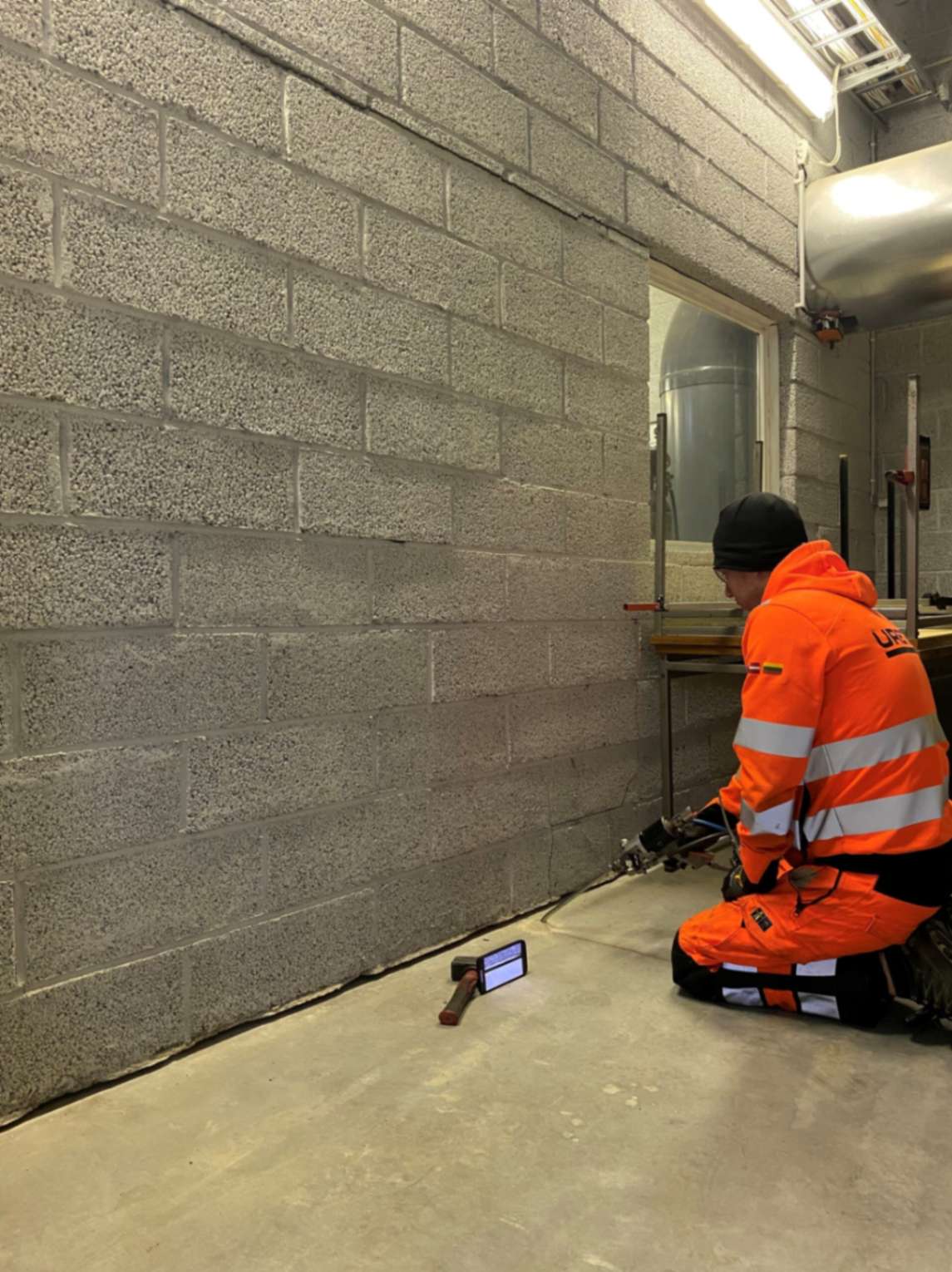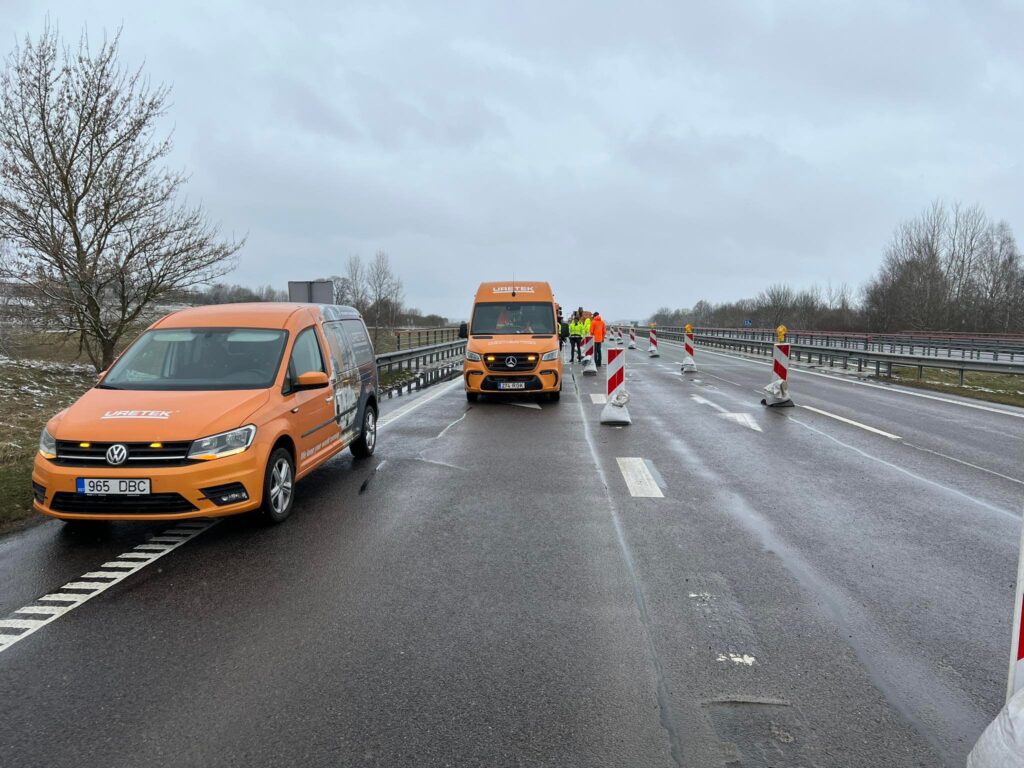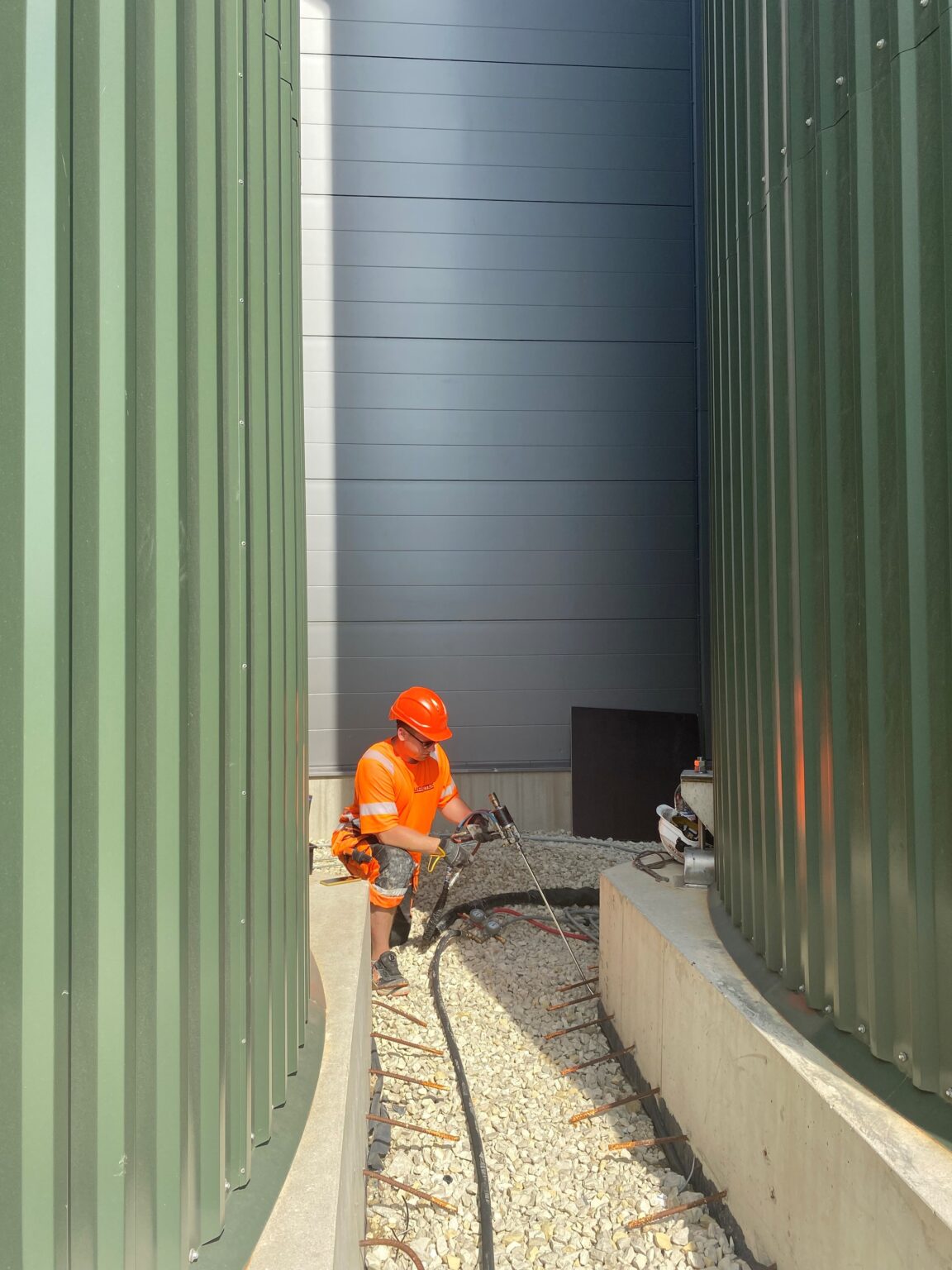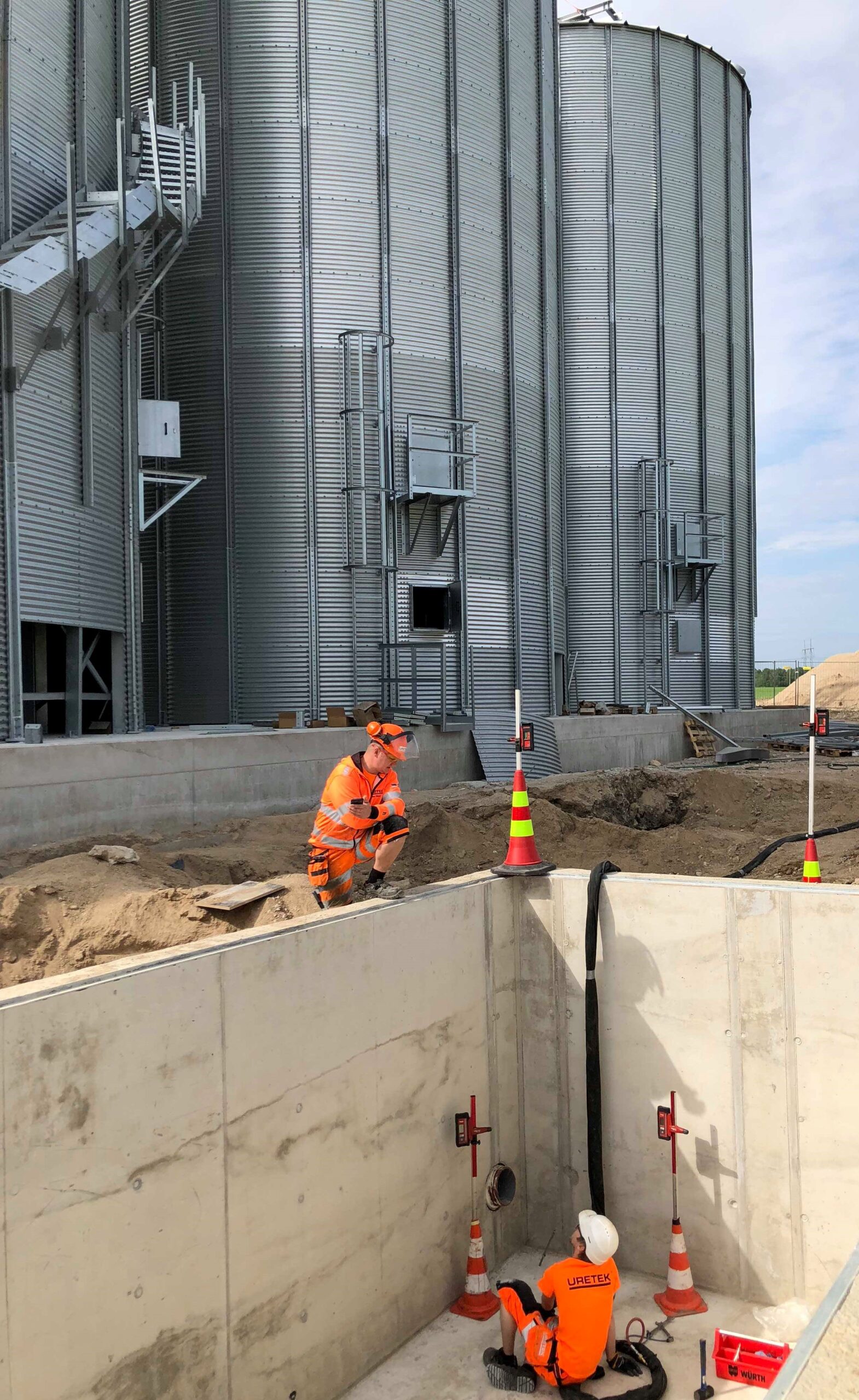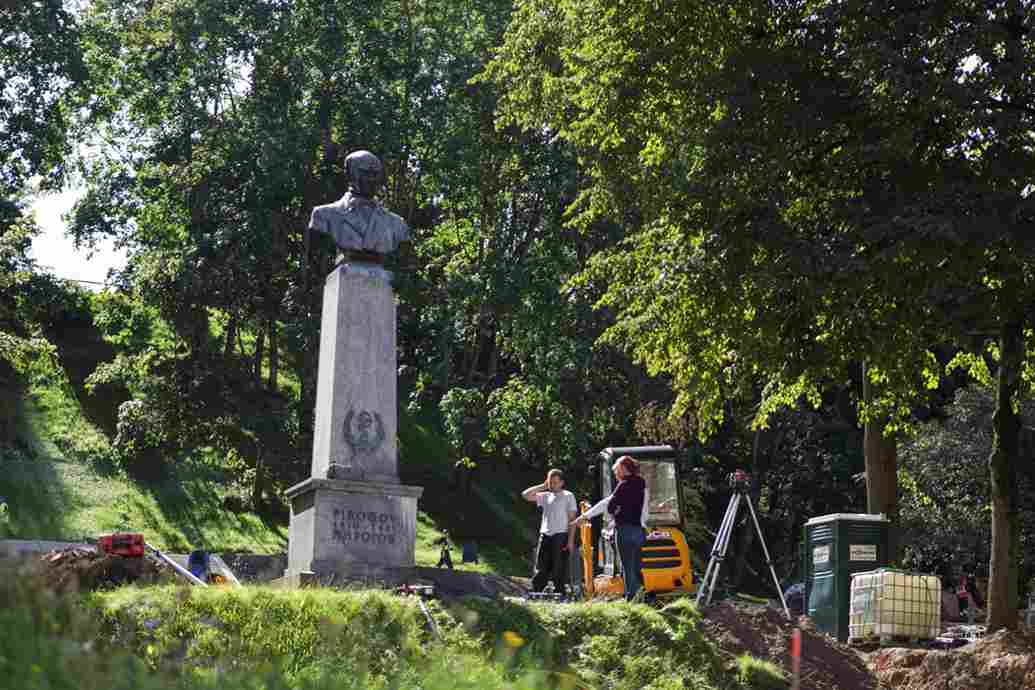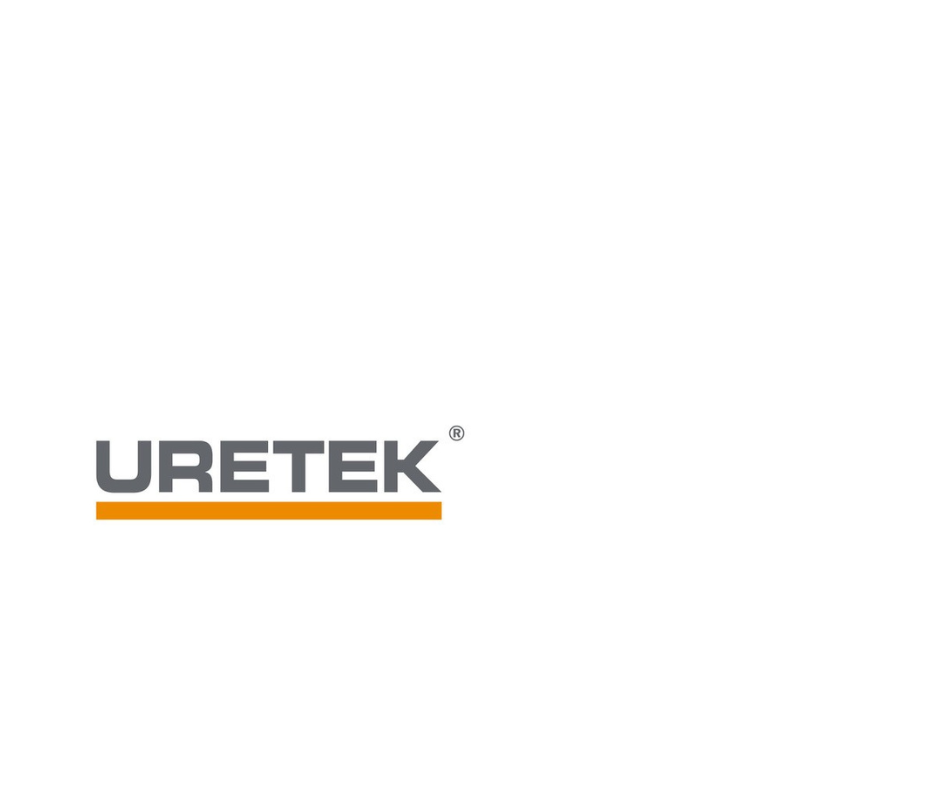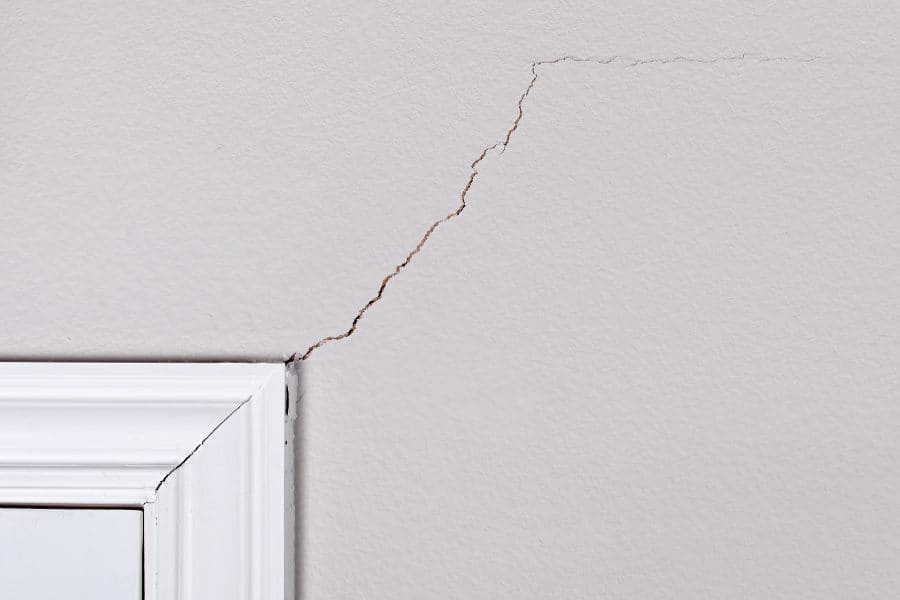The floors of industrial and utility buildings may subside over time
Covering consisting in concrete slabs are often damaged at joints or become curved due to large load. Thanks to geopolymers, concrete floors can be repaired without disrupting the operation of the facility.
Subsidence of concrete floor slabs in buildings is allowed only to certain extent. When building such floors, all appropriate preparation works must be performed prior to assembling concrete slabs. However, in case of defective floor assembly or excessive loads on concrete floor, the premises need urgent repairs. Otherwise, sunken, deformed and tilted concrete slabs will obstruct normal work process.
Strengthening and repair of concrete floors
Slab Lifting method is used for stabilisation, lifting and strengthening of concrete floors. This method enables complete repair of concrete floor with the shortest possible time. Furthermore, it does not require dismantling concrete slabs, shelving and installed equipment, which saves much more time and money compared to traditional repair methods.
Slab Lifting method stands out by the fact that when injecting geopolymer resins, the load on concrete floor slabs are no longer considered a disadvantage, but an advantage instead. In some cases, it is even recommended to install new equipment in the room and only then commence lifting and stabilising concrete floor slabs. When concrete floor is exposed to additional load, it is much easier to direct the pressure generated during injection of geopolymer resins into deeper soil layers. This allows better quality of soil compaction and strengthening of concrete slabs.
How concrete floor is levelled
Repairing concrete floor by means of Slab Lifting method allows quick commissioning of restored floor sections. There are no work stoppages that otherwise occur when dismantling and re-installing concrete slabs. Therefore, using this method has minimum effect on client’s business activities.
For lifting, stabilisation and levelling of concrete slabs, geopolymers are injected under the concrete surface through 1–142 mm holes. Geopolymer components are mixed in special compact devices at the time of injection. Almost immediately after reaching the soil, geopolymer components undergo chemical reaction which makes the material expand. The material fills all hollow cavities under the concrete, force liquid from the soil under a structure into other soil layers and expand towards the weakest parts of the soil.
Soil is strengthened at the distance of 500 mm from geopolymer injection point. A new layer with increased load-bearing capacity is formed in the process, which allows lifting the concrete slab. The process of lifting and levelling of the slab is monitored in real time with accuracy of ± 1 mm.
Stabilisation of floor in cold chamber
Cold chambers in warehouses stand out by strict requirements for insulation, including floor insulation. It is not always easy to insulate the floor when converting existing premises into cold chambers. Using geopolymers when levelling and strengthening concrete floor has an indirect effect of improving floor insulation.
The reason for that consists in the fact that geopolymer used for strengthening and compacting the soil spreads evenly under the concrete and forms a hermetic layer with low thermal conductivity. Thus, in addition to strengthening the concrete floors in cold chambers, geopolymers allow reduce the costs of floor insulation.

